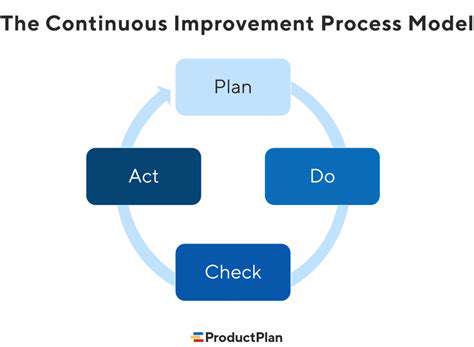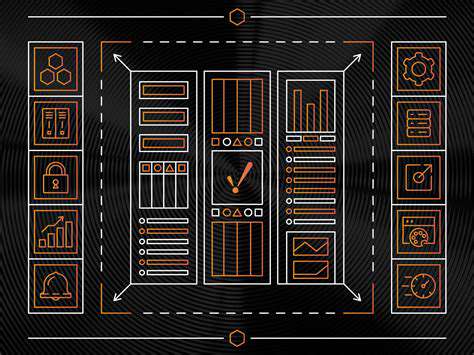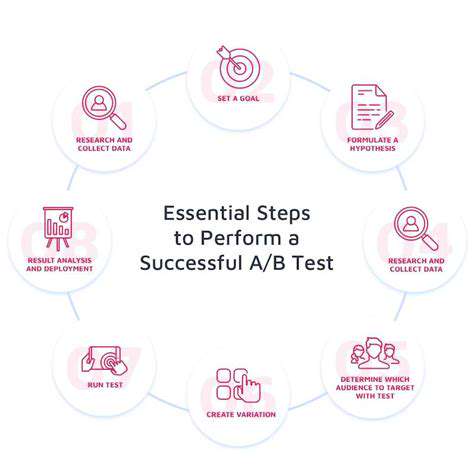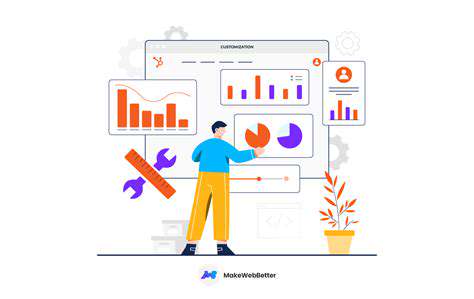User Pathing Analysis in GA4
Leveraging GA4 Features for Pathing Analysis

Understanding the GA4 Data Model
The Google Analytics 4 (GA4) data model represents a significant shift from the Universal Analytics model, focusing on events rather than sessions. Understanding this fundamental difference is crucial for leveraging GA4's features effectively. This new model allows for a more holistic view of user interactions, capturing a wider range of user actions and providing a more comprehensive understanding of user journeys.
The event-based structure of GA4 allows for greater flexibility in tracking user behaviors. This flexibility is a key advantage for businesses looking to gain deeper insights into their customers' interactions with their products and services.
Customizing Events for Enhanced Tracking
GA4's event-based architecture empowers you to define custom events specific to your application or website. This detailed tracking capability allows for a rich understanding of user interactions beyond standard metrics like page views and sessions. You can tailor events to capture specific user actions, such as completing a form, viewing a specific product, or adding an item to a shopping cart.
By defining and tracking custom events, you gain the ability to monitor and understand user behavior in granular detail, enabling more targeted and effective marketing strategies.
Utilizing Enhanced Measurement for Seamless Tracking
Enhanced measurement in GA4 automates the collection of crucial data points such as scrolling depth, video engagement, and outbound link clicks. This automatic tracking streamlines data collection, requiring minimal configuration on your part. This feature is invaluable for measuring user engagement and understanding how users interact with your content and marketing materials.
Leveraging User-Level Data for Personalized Experiences
GA4 allows for the collection of user-level data, enabling the creation of more personalized user experiences. This data can be used to segment users and tailor content, offers, and interactions to individual preferences and needs. Understanding user behavior at an individual level allows for more targeted marketing efforts and increased customer satisfaction.
Segmenting Users for Targeted Marketing
GA4's robust segmentation features allow for the creation of custom user segments based on various criteria, such as demographics, user behavior, and engagement levels. By identifying and understanding distinct user groups, you can develop and implement highly targeted marketing strategies.
Targeted campaigns and personalized content can significantly improve engagement and conversion rates. This segmentation capability is a key part of maximizing the ROI of your marketing efforts.
Implementing Conversion Tracking for Measuring Success
Conversion tracking within GA4 enables you to precisely measure the effectiveness of your marketing campaigns in driving desired outcomes. This feature provides detailed insights into the user journey leading up to a conversion, such as purchases, sign-ups, or form submissions. Properly implemented conversion tracking provides valuable data for optimizing your marketing strategies and maximizing return on investment.
By accurately tracking conversions, you can identify which channels and tactics are most effective, allowing you to allocate resources more effectively and achieve a higher return on your marketing investments.
Integrating with Other Google Products for Comprehensive Insights
GA4 integrates seamlessly with other Google products, providing a comprehensive view of your marketing ecosystem. This integration allows for the connection of data from various sources, including Google Ads, Search Console, and YouTube, creating a holistic understanding of user behavior across different touchpoints. This interconnectivity allows for the creation of more comprehensive reports and the identification of key trends.
This integrated approach enhances the overall effectiveness of your marketing strategies by allowing for a more holistic and interconnected view of your campaigns and their impact on user behavior.
Interpreting and Acting on Pathing Analysis Results

Understanding Pathing Fundamentals
Pathing, in its simplest form, is the process of determining the optimal route for a moving entity, be it a character in a video game, a robot navigating a warehouse, or even a delivery truck finding the quickest route to a destination. This fundamental concept underlies a vast array of applications, from artificial intelligence to logistics. Understanding the principles of pathfinding is crucial for developing effective and efficient systems in these areas.
Key considerations include the environment's layout, obstacles, and available resources. These factors directly influence the calculated path. Analyzing these elements allows for the creation of algorithms that are both accurate and responsive to dynamic changes in the environment. A well-designed pathing system is essential for smooth and intelligent movement within a given space.
Analyzing Pathing Algorithms
Various algorithms exist for calculating paths, each with its own strengths and weaknesses. A common example is Dijkstra's algorithm, which systematically explores all possible paths, ensuring the discovery of the shortest route. Another approach, A*, utilizes heuristics to prioritize promising paths, leading to faster computations, particularly in complex environments. Choosing the appropriate algorithm depends on the specific demands of the application.
Considering factors like the size of the environment and the need for real-time updates significantly impacts the algorithm selection. Understanding the trade-offs between speed and accuracy is crucial in selecting the right pathing algorithm for a particular task.
Implementing Pathing in Different Contexts
Pathing is vital in game development, enabling characters to navigate levels effectively. It allows for realistic and engaging interactions between characters and the environment, enhancing the overall gameplay experience. In robotic systems, pathing ensures robots can move around obstacles and reach their destination safely. This is critical in applications like warehouse automation and manufacturing.
Real-world applications extend to logistics and transportation. Optimizing delivery routes using pathing algorithms can significantly reduce travel time and fuel consumption. This efficiency translates into cost savings for businesses and a more sustainable approach to transportation.
Evaluating Pathing Performance
Assessing the efficacy of a pathing system involves evaluating its speed, accuracy, and efficiency. Speed is critical in real-time applications, where delays can significantly impact the user experience. Accuracy ensures that the chosen path is indeed the optimal one, minimizing wasted resources. Efficiency considers the system's resource consumption in terms of processing power and memory usage.
Measuring these factors allows for optimization and refinement of the pathing system to meet specific performance criteria. This iterative process guarantees a robust and well-functioning pathing system that effectively addresses the unique needs of the specific application.
Read more about User Pathing Analysis in GA4
Hot Recommendations
- Personalizing Email Content with User Behavior
- Geofencing for Event Attendance Tracking
- Reputation Management on Social Media
- UGC Beyond Photos: Videos, Testimonials, and More
- The Future of Data Privacy Regulations
- Accelerated Mobile Pages (AMP) Benefits and Implementation
- The Future of CRM: AI and Voice Integration
- Google Ads Smart Bidding Strategies: Maximize Value
- Common A/B Testing Pitfalls to Avoid
- Local SEO Strategies for Small Businesses











